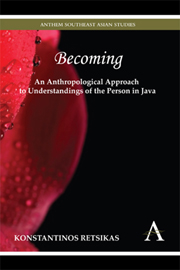Book contents
- Frontmatter
- Contents
- List of Maps and Figures
- Acknowledgements
- Prolegomenon
- Map
- Chapter 1 The Becoming of Place: Moving, Clearing, Inhabiting
- Chapter 2 The Perception of Difference: Embodying, Reversing, Encompassing
- Chapter 3 The Blood of Affinity: Marrying, Procreating, Housing
- Chapter 4 Matters of Scale: Feeding, Praying, Sharing
- Chapter 5 A Pulsating Universe: Annihilating, Enhancing, Magnifying
- Chapter 6 The Marital and the Martial: Gendering, Killing, Oscillating
- Epilogue
- Bibliography
- Index
Chapter 2 - The Perception of Difference: Embodying, Reversing, Encompassing
Published online by Cambridge University Press: 05 November 2012
- Frontmatter
- Contents
- List of Maps and Figures
- Acknowledgements
- Prolegomenon
- Map
- Chapter 1 The Becoming of Place: Moving, Clearing, Inhabiting
- Chapter 2 The Perception of Difference: Embodying, Reversing, Encompassing
- Chapter 3 The Blood of Affinity: Marrying, Procreating, Housing
- Chapter 4 Matters of Scale: Feeding, Praying, Sharing
- Chapter 5 A Pulsating Universe: Annihilating, Enhancing, Magnifying
- Chapter 6 The Marital and the Martial: Gendering, Killing, Oscillating
- Epilogue
- Bibliography
- Index
Summary
Kinds of bodies
My body is the fabric into which all objects are woven, and it is, at least in relation to the perceived world, the instrument of my comprehension.
(Merleau-Ponty 1962, 235)Downtown Probolinggo, March 1999. Gatot and I were having lunch in Sumber Hidup, an upmarket restaurant owned by Chinese-Indonesians in downtown Probolinggo. Gatot had been helping with the transcription of some interviews I had conducted over the past week. He was a young unmarried man in his mid-twenties, working in the soya sauce factory on the outskirts of the city. Born of a local woman and a Madurese migrant, he was fluent in Javanese and Madurese, as well as Indonesian, as do several of the inhabitants of Probolinggo with varying degrees of competence. Across our table, there was another young man sitting all by himself, eating silently; a rare sight in this part of the world where food and sociality go together. It was probably for this reason that Gatot invited him to our table and, despite the young man's repeated and polite refusals, Gatot's insistence eventually won him over. The slender but well-built man approached our table with great hesitancy, asked for our permisi (Ind.), took to the seat slowly and placed his plate on the table with such a care and attention as if the slightest noise would be tantamount to a gross offence. Speaking in Indonesian mainly but interjected with polite, midlevel Javanese pronouns, we introduced ourselves.
- Type
- Chapter
- Information
- Publisher: Anthem PressPrint publication year: 2012



